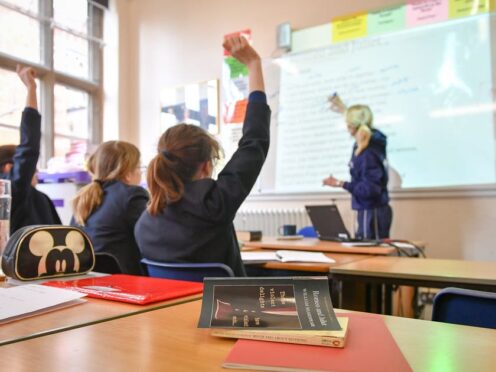
Headteachers should not authorise absences for pupils to attend protests, new Government guidelines have said.
The Department for Education (DfE) has published statutory guidance for schools and councils in England – which will come into effect in August – as part of its drive to boost attendance following the pandemic.
The ‘Working together to improve school attendance’ guidance says: “Leave of absence should not be granted for a pupil to take part in protest activity during school hours.”
It comes after Education Secretary Gillian Keegan said in November that she was “deeply concerned” over the sight of pupils taking part in pro-Palestinian demonstrations during the school day.
School Strike for Palestine rallies have taken place across the UK, with images on social media showing events in cities including London, Bristol and Glasgow.
The current non-statutory attendance guidance for schools and councils – which was published in 2022 and will be replaced on August 19 by the Government’s new guidelines – does not mention protests.
The new guidance comes after centre-right think tank Policy Exchange said school leaders should not authorise absence to attend protests.
A report, published by the think tank in December, called on the DfE to update its attendance guidance to make it explicit that absence to attend protests was “unacceptable and should never be authorised”.
Before the pandemic, pupils across the UK took part in a series of school strikes, led by climate activist Greta Thunberg, on climate change.
In March 2019, Edinburgh City Council said children absent from school to take part in climate strikes would not be penalised for doing so as long as they had permission of parents or carers.
On Thursday, the DfE announced a series of measures as part of a drive to return attendance to pre-pandemic levels – including increasing fines for parents taking children out of school without permission from £60 to £80.
The DfE has said school absence fines will be brought under a national framework to help tackle inconsistencies in their use across England.
Schools have now been told to consider a fine if a child misses five days of school for unauthorised absence.
On the inclusion of protests in the new statutory attendance guidance for schools and councils, Geoff Barton, general secretary of the Association of School and College Leaders (ASCL), said: “We’re not sure this is terribly helpful.
“Our view is certainly that pupils should not miss school to take part in protests. It is not only a matter of their lost learning but the fact that the school has to manage and follow up their absence.
“But it is also the nature of these things that the pupils involved in protests feel very strongly indeed about the cause over which they are protesting, and that this can be a very difficult and sensitive situation to manage.
“As such, we feel that these are matters that are best left to the discretion of schools.”

Enjoy the convenience of having The Sunday Post delivered as a digital ePaper straight to your smartphone, tablet or computer.
Subscribe for only £5.49 a month and enjoy all the benefits of the printed paper as a digital replica.
Subscribe